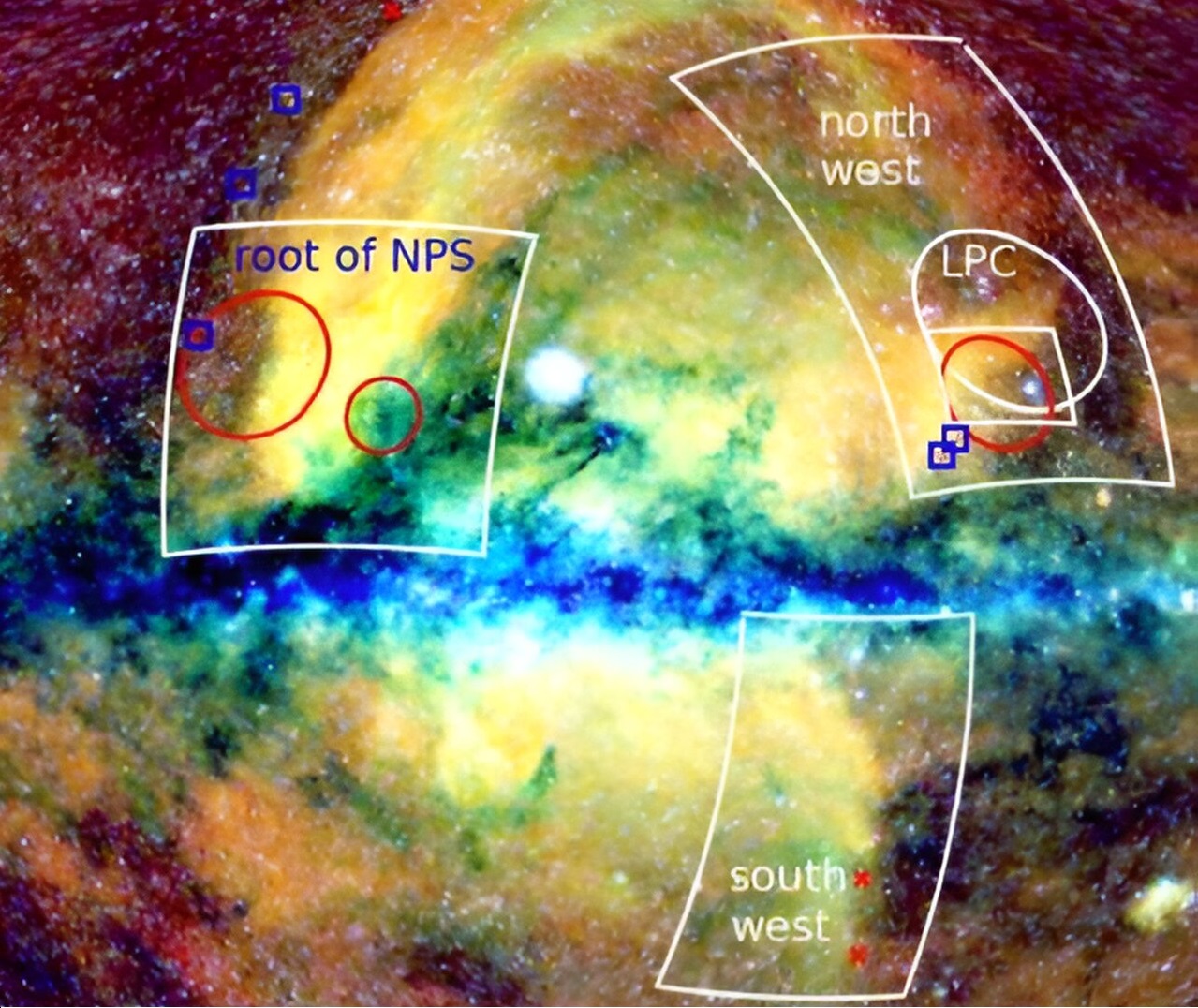In 2020, Germany’s eROSITA X-ray telescope discovered two huge bubbles near the center of the Milky Way. New research carried out with its help has revealed what this giant structure really is.

New structures in the Milky Way
In 2020, astronomers discovered a large hourglass-shaped structure at or near the center of our Milky Way galaxy. Several different hypotheses have been proposed to explain their exact nature, which have been termed “eROSITA bubbles“. Now a research team of scientists from China and Europe has created a high-resolution map of this region of the sky and found evidence that these mysterious spheres are actually parts of the same structure.
The eROSITA bubbles are two-dimensional structures first detected by the eROSITA X-ray telescope, which is aboard the Russian-German high-energy astrophysics space observatory Spektr-RG, sent into orbit in 2019. In shape, they were very similar to the “Fermi bubbles” discovered a decade earlier, protruding from the center of the galaxy.
Features of eROSITA bubbles
While the two Fermi bubbles were observed in the gamma-ray and X-ray spectra, the eROSITA bubbles were seen as soft X-rays — high-energy photons, but with lower energy than the X-rays used to image bones, and much less energetic than gamma rays.
The eROSITA bubbles are generally larger and more energetic than Fermi bubbles, with quasi-circular lobes above and below the Milky Way plane, and two prominent objects in the northern bubble: the North Polar Spur (NPS) and the Lotus Petal Cloud (LPC). On a two-dimensional X-ray map, they look like two separate objects, and could be two different three-dimensional structures that accidentally formed a two-dimensional bubble.
There are two conflicting hypotheses to explain the eROSITA bubbles: either a pair of 33,000 light-year-sized giant bubbles inflated by the center of the Galaxy, or a 330 light-year-sized structure in a region of the Sun that happens to be located toward the center of the Galaxy. The three-dimensional structure of eROSITA bubbles is unknown, so they may in fact only be a two-dimensional shadow of an unknown object.
Size and shape of the structure under study
Although astronomers were unable to determine the distance to the X-ray emissions of the eROSITA bubble, they did measure the distance to the dust clouds that are part of the Milky Way. A previous study identified three isolated dust clouds between 1640 and 2600 light-years away with shapes that perfectly match the X-ray shadows on the eROSITA bubbles, meaning that the bubbles are even farther away. A shock front emitting polarized radio waves connects the North Polar Spur and the Lotus Petal Cloud.
This work also found that the outer boundary of the eROSITA northern bubble can be easily explained as a curved three-dimensional structure extending from the center of the Galaxy. The scientists concluded that the scale of the eROSITA bubbles is about 33,000 light-years.
To solve this perspective issue, the astronomy team avoided analyzing the bulk of the eROSITA bubbles. They focused on the problem of whether they were a giant structure far away from us, or a smaller but closer structure.
From the shape of the three-dimensional dust clouds, we could conclude that they were at least 3,300 light-years away. Arcs of radio emission were detected in the dark region between the two objects (“dark” means no X-ray emission) and were attributed to the shock wave of the bubble front. This allowed accurate outlining of the outer boundary of the bubble.
According to phys.org


